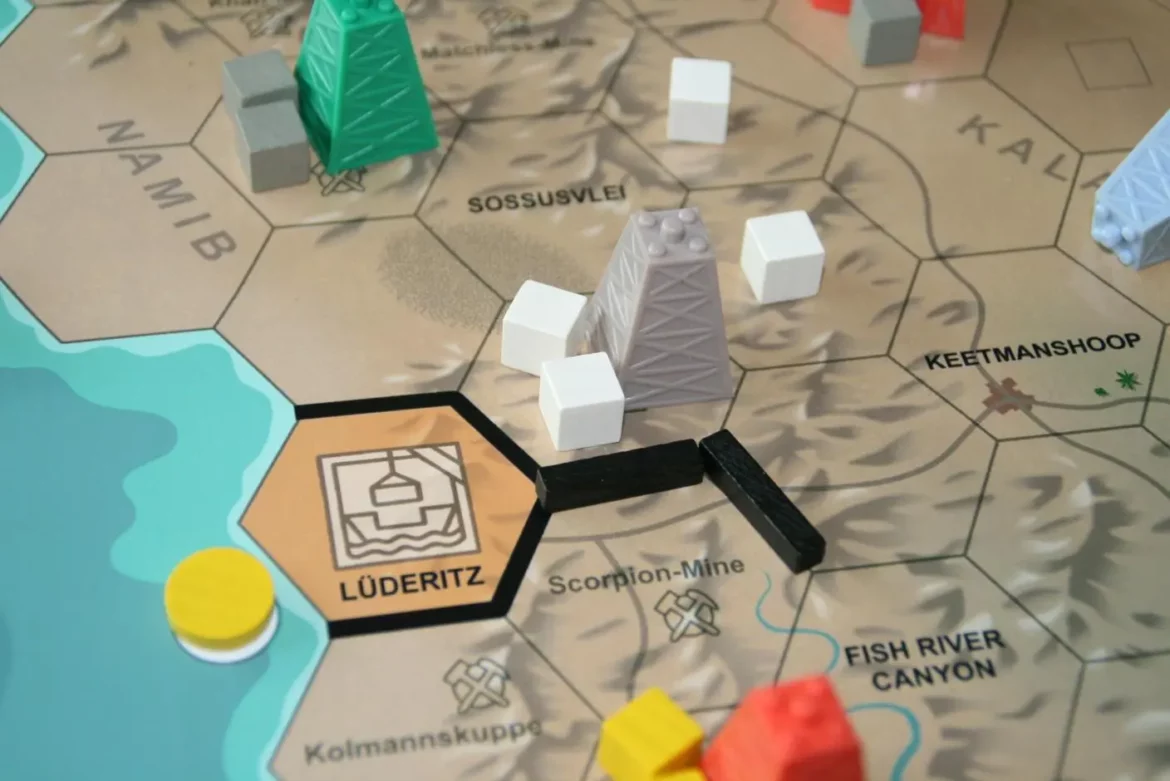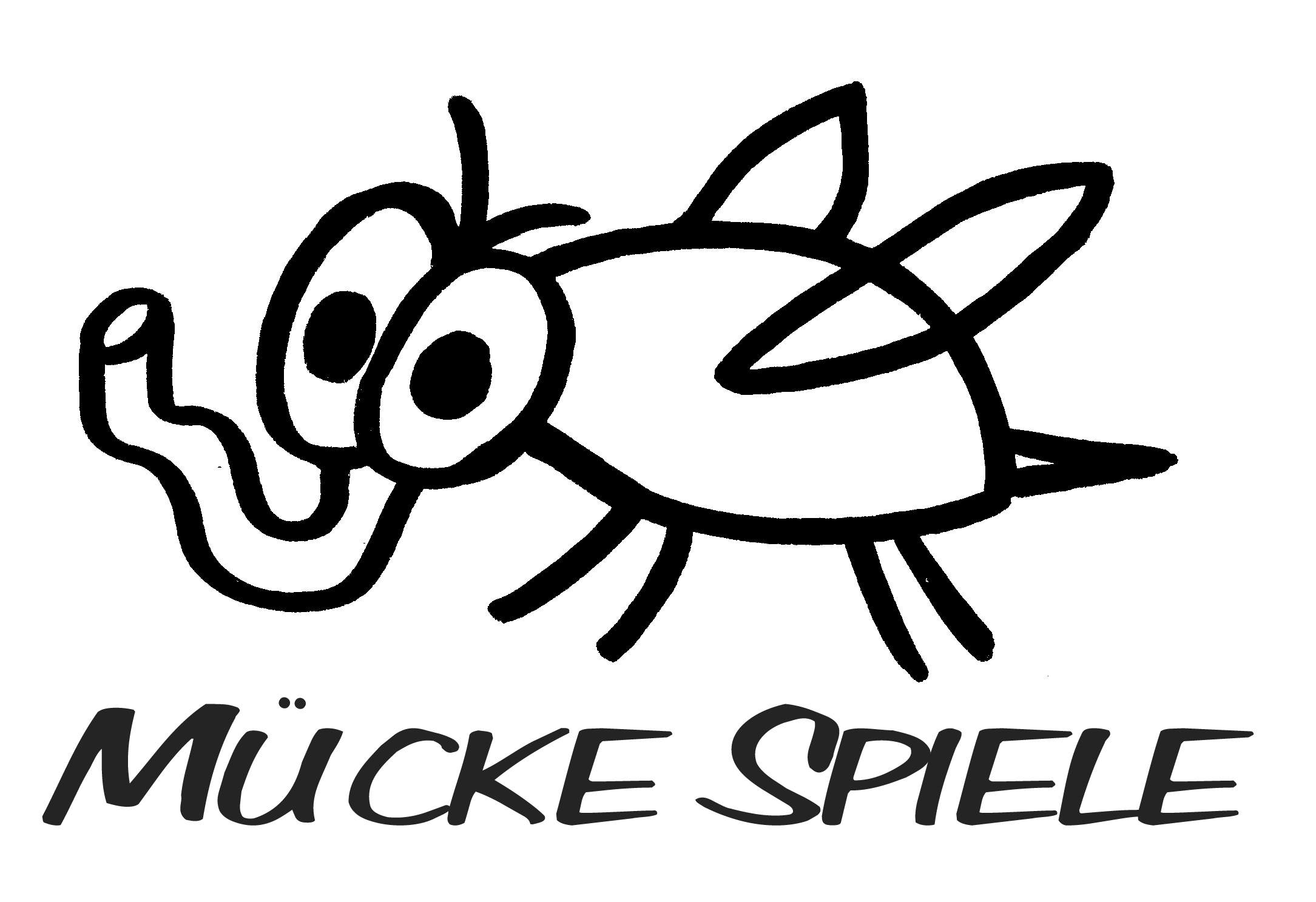Winner of the 2009 author competition (strategic game)
Rules
Players mine for four types of raw materials – diamonds (white dice), gold (yellow), silver (gray). ) and copper (brown) – and try to transport these raw materials to the ports of the coast in order to sell them there at the best possible price. However, the colonial government imposed restrictions stating that no company could mine all types of raw materials. In order to achieve their goals, the players must make the representatives of the colonial government, who control the transport routes and ports, favorable with “hand money”. However, too much hand money damages the company’s reputation and weakens the position at the end of the game.
The game runs over 6 rounds. Each round consists of the following phases:
- “Greasing” the colonial administration
- Starting with the first player, you now bid for influence on the expansion of the rail network and the transport of raw materials (“greasing” the colonial administration). The minimum bid is the current number of rounds.
- Construction activities
- Players build mines, build rail networks and prepare transportation. In player order, each player carries out the following 5 actions. One player carries out all 5 activities before the next player takes his turn.
- Complete mines
To complete a mine, the player must place lying derricks in an upright position. The player must complete all mines if he can.
- “Greasing” the colonial administration
- Start a new mine
To start a new mine, the player places a derrick lying on its side on a space where resources have been found (a space with resource dice), whereby only spaces that have resources that the player also has are possible can dismantle! If such a slot is not available, the player cannot start a new mine. A player must start a new mine if possible.
- Start a new mine
- Search for mineral resources
The search for mineral resources brings more resource dice onto the game board. These dice cannot be placed on harbors and fields with drilling rigs or fields marked with exploited mine markers. Players can also only search for raw materials that are permitted for them. All players must search for mineral resources (if they can). When searching for natural resources, the player places two resources of the same type (if available) on an empty space adjacent to a space that already contains one or more resource cubes of that type. This represents the continuous vein.
- Search for mineral resources
- Place rails
A player expands the rail network by placing rails along the edges of the playing fields. New rails must be installed on existing rail sections. A field is considered to be connected to the rail network if there is a rail on one of the six sides. Some fields on the game board already have fixed rail sections.
- Place rails
- Move truck to a mine
The player must send his truck to one of his active mines. If a player does not have a completed mine, he cannot perform this action.
- Move truck to a mine
- Transportation
- In player order, the first three players carry out a transport phase in which they decide which type of raw material will be shipped to which port. The transport of the selected resource type is completed before the next player selects a different resource type for transport.
- Administration
- The raw material markets are changing and preparations are being made for the next round (see also the overview on the last page/cover). Place the remaining marker for the raw material that was not transported on the “0” of the corresponding column. The raw material index is now adjusted to market events.
End of game
The game ends once the sixth round has been completed. Each player still receives money for the mines under construction. For each resource on the board that is not located at a mine (finished or under construction), the corresponding price of that resource is reduced by 1 on the resource index. This represents the oversupply in the market. Players then receive the current market value for all raw materials located at a mine that is under construction.
Finally, players can exchange 5 gp each for 1 image point. The player with the highest image value wins. In case of a tie, the player with the most money wins.

